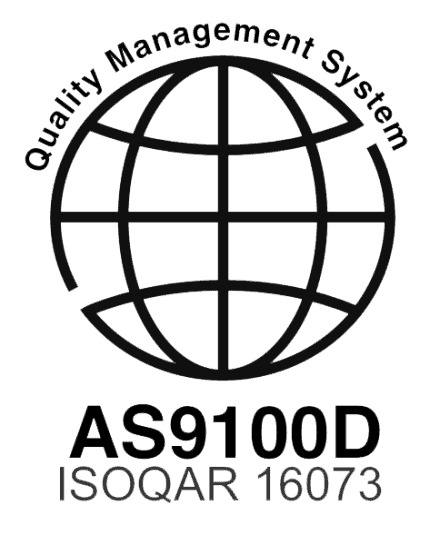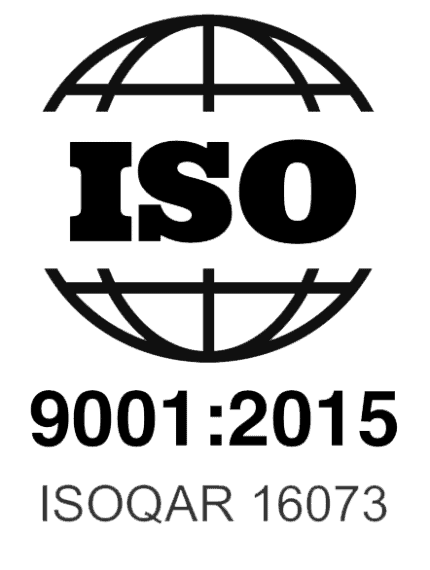Inconel Properties
Inconel is a superalloy family, composed principally of nickel and chromium, along with smaller percentages of iron, molybdenum, niobium, and other materials. Overall, Inconel alloys have high strength and corrosion resistance, and maintain those attributes from cryogenic temperatures to 1800 degrees F (980 degrees C). Inconel is austenitic, which means they have austenite as their primary crystalline structure.
When Inconel is heated, it protects its surface by forming a stable, passivating oxide layer. Inconel consequently has great tolerance for high heat. It also retains its strength over a wide range of temperatures, making it attractive for high-temperature applications where other metals, like aluminum or steel, might give in to creep due to thermally-induced crystal vacancies. Creep refers to a time-dependent, inelastic deformation, which results from stress at temperatures within roughly 40% of the melting point. Depending on the alloy, solid solution strengthening or precipitation hardening contributes to developing Inconel’s high temperature strength. Simply put, Inconel is ideal when extreme temperature and chemical resistance are a must and for processes where high temperatures would otherwise degrade material’s oxidation resistance.
Common Alloys of Inconel
All of the Inconel alloys perform well at high temperatures, but each alloy performs optimally in slightly different applications. Some more common alloys include Inconel 718 and Inconel 625.
Inconel 718 is precipitation-hardened, giving it maximum strength and high creep-stress rupture strength. Subsequent heat treatments enhance machinability of the annealed condition of this alloy. Alloy 718 exhibits exceptional weldability and is highly resistant to post-weld cracking. Some major applications for Inconel 718 are components for gas turbines, aircraft engines, fasteners and other high strength/high heat applications in aerospace.
Inconel 625’s corrosion resistance, high strength and excellent thermal stability make it the material of choice for applications in oil, gas/petrochemical and refineries markets. Alloy 625 is immune to chloride-induced stress corrosion cracking due to its high nickel content. It has good resistance to pitting, fatigue stress and crevice corrosion. Inconel 625 has a particularly high creep-rupture strength and high oxalic resistance. Inconel 625 is often found in jet engine exhausts, flare stacks, chemical plant equipment and applications involving salt water or seawater. It is commonly used in pumps, valves and heat exchangers, to name a few.
Electron Beam Welding Inconel
Inconel welds have a tendency to crack, which can make welding it rather tricky. Because of this, some Inconel alloys were specifically designed for use in welding. For example, Inconel 625 is very easy to weld compared to other Inconel alloys. Inconel 718 is another particularly weldable alloy. Its significant amount of Iron content allows for a lower price per kilogram than other materials in its class, and it is precipitation hardened, which reduces its susceptibility to cracking.
EB welding is commonly called out as the preferred welding process for superalloys such as Inconel. EB welding has the high power required to quickly melt the material, ensuring a very narrow fusion-zone (FZ) and a minimized heat-affected zone (HAZ), which reduces distortion and residual stresses. EB welding happens in a vacuum, which mitigates material contamination and yields pure welds at any depth of penetration.
As always, it is critical that all joint areas are thoroughly cleaned before EB welding. First, a standard alkaline cleaning process should be employed to remove any machining oils and chips from the parts. Then, passivation should be done to maintain the corrosion resistance of the material. This process will first remove any free iron on the surface from interface with machine tools or other incidental contact. It should be noted that the iron that is alloyed in Inconel is not a concern for removal. The passivating solution will then convert “free” chromium to chromium oxide in order to maximize the material’s corrosion resistance.
There are two primary means of passivating Inconel alloys, and the methods are quite similar to 300 series stainless steel. One option is to immerse the Inconel parts in a solution of 25-50 percent nitric acid operated at room temperature to about 140°F (60°C) for about 20-30 minutes. A similar immersion process operated in a similar temperature range and time can be performed using a 10-percent citric acid solution instead.
Joint Preparation
Here are some common sense guidelines that should be followed when preparing Inconel parts for EB welding:
- Clean cloths should be used for cleaning Inconel surfaces with solvents, such as paper towels or cheese cloth. Precision parts should be handled wearing powder free, latex gloves, and cleaned using link free cotton swabs and delicate task wipes with the appropriate solvent.
- When blowing debris off a joint, bottled gas, such as argon or nitrogen, should be used to maintain a clean weld area. Compressed shop air should not be used because it could contaminate the area.
- Solvents should be used to clean parts and joints before using a wire brush in order to avoid embedding hydrocarbons and other contaminants into the joint potentially introduced by the brush. Therefore, the solvents are far more effective.
- New or recently cleaned stainless steel brushes should always be used when cleaning the weld area, as using old or dirty stainless steel brushes could contaminate the joint areas.
- Generally, surfaces that have been chemically etched, passivated or precision cleaned should not be wire brushed.
- All wire brushes and scraping, filing and cutting tools should be cleaned frequently.
Pre-Treating and Fixturing Inconel
Proper pre/post weld heat treatment minimizes the risk of liquation cracking in Inconel due to EB welding. As mentioned earlier, some of EB welding‘s assets include high energy-density, deep penetration, narrow welding seam and small HAZ. These are all advantageous when welding Inconel because of Inconel’s ability to retain integrity in high pressure and heat environments. As always, with EB welding, joint-fixturing should be done with extreme care and precision. Spaces or gaps in the joint cause less energy to be directed into the weld and will result in a weaker joint.
Joint Varieties
Joints produced by EB welding adhere to slightly varied and stricter standards because of EB welding‘s precision and the fact that it does not require a filler. This includes:
-
- Butt Joint:
- This joint requires a fit-up tolerance that is 15% of the material thickness.
- Less than 25% of the material thickness for misalignment and out-of-flatness of parts is necessary.
- It is critical that sheared edges, when present, are straight and square.
- Lap Joint (burn-through or seam weld):
- In order to maximize weld penetration and speed, there can not be a significant space between the pieces that will be welded.
- Fillet Joint:
- This joint demands square edges and a good fit-up.
- Butt Joint:
INCONEL® is a registered trademark of Special Metals Corporation.



